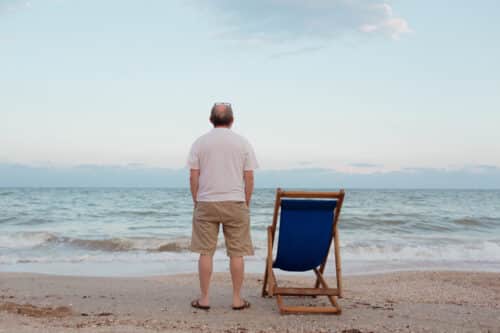Aging and Staying Positive
Used to bees don’t make no honey.
– Les Brown
Aging in Place
Ever find yourself (and I’m talking mainly to the guys here) in a conversation with a new person you have just met, and they are in your age cohort? After the brief formalities the conversation can quickly turn to “ain’t it awful.”
With guys over 65 this is often the default, talking about how shitty everything is now compared to the good old days…I know this because I fall into this dark chasm on a regular basis. It’s how boomer males bond and it’s sort of foxhole mentality.
I see it as akin to gossip, it feels good while you’re doing it, but after it’s over the bad taste lingers…and leads to negative feelings. Why do older guys do this?
Why Older Men Get Negative and Depressed in Old Age
Older men can often experience negativity and depression in later life due to multiple factors such as retirement, loss of social connections, declining health, or the loss of loved ones. Retirement, in particular, can lead to a significant loss of identity and purpose, leaving men feeling disconnected and isolated. Additionally, physical health challenges can compound emotional distress, causing men to feel increasingly vulnerable and frustrated.
How to Avoid Going Negative and Stay Positive
Staying positive and avoiding negativity involves maintaining strong social connections and remaining actively engaged in meaningful activities. Older men should prioritize building new relationships, volunteering, or pursuing hobbies and interests that foster a sense of community and belonging. Regular physical activity, balanced nutrition, and routine medical care can significantly enhance mental health and resilience, enabling men to feel more empowered and positive.
Practical Steps for Maintaining Positivity
Implementing practical steps such as establishing a daily routine, setting achievable goals, and practicing mindfulness or relaxation techniques can greatly benefit emotional well-being. Men can also benefit from talking openly with friends, family, or professionals about their feelings and concerns. By actively participating in their communities and seeking opportunities for lifelong learning and personal growth, older men can cultivate a more optimistic and fulfilling outlook on life.
Key Statistics on Suicide Rates for Men Over 65
- Suicide rates climb sharply with age among men 55+: In 2021, the U.S. recorded a suicide rate of 26.1 per 100,000 for men aged 65–74, which increases to 38.2 per 100,000 for those 75–84, and reaches 55.7 per 100,000 among men aged 85+. These are significantly higher compared to female rates in the same age groups theguardian.com+15cdc.gov+15aarp.org+15.
- Older men disproportionately affected compared to women: White men over 65 in the U.S. die by suicide at nearly three times the national average and are about eight times more likely to die by suicide than women in the same age group prb.org.
- 2022 reinforced the trend: According to the National Institute of Mental Health, in 2022 men aged 75 and older had the highest suicide rate—43.9 per 100,000, compared to 27.2 per 100,000 for ages 65–74 apnews.com+7nimh.nih.gov+7cdc.gov+7.
These numbers paint a concerning picture: elder men in the U.S. face steeply rising suicide rates as they age—rates far above those of their female peers and markedly above national averages. Like many things, the key is awareness. So, next time I find myself going negative to bond with a fellow boomer or GENX, I’m going to focus on what’s going right with the (my) world. I can’t say I will always be successful, but I think engaging in some of the practical steps mentioned can go a long way towards more positive conversations—and aging!
See
My Question to ask: “What’s going right in my life now, today?”
I didn’t mention “GET OFF MY LAWN!!!!!!” intentionally 😉
Author Note: I have had 2 males over 65 in my family commit suicide by gun.

